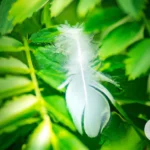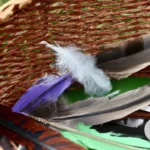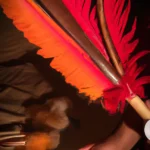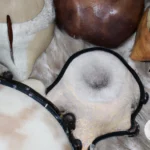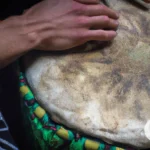Feathers have been used for shamanic rituals for centuries, and their significance cannot be overstated. However, it is crucial to acknowledge the ethical considerations surrounding the collection and cleaning of feathers. In this article, we will explore the legal restrictions for feather collection, the different methods of ethically collecting and cleaning feathers, and alternative options to collecting wild feathers. Through a step-by-step guide and recommended supplies, we will outline how to collect and clean feathers in a way that respects the bird and its environment while still providing the necessary tools for shamanic practice. Let us embark on this journey together as we delve into the importance of responsible and ethical feather collection.
The Importance of Ethical Collection and Cleaning of Feathers
Feathers have always been considered sacred and powerful symbols in many spiritual and shamanic practices. They are often used as tools for healing, ritual, and guidance. However, it is essential to collect and clean feathers ethically to honor the spirit of the bird and maintain the integrity of their energy.
Unethical feather collection can have a severe impact on bird populations and their ecosystems. When feathers are stripped from live birds, it causes them physical harm, exposes them to predators, and leaves them vulnerable in extreme weather conditions. It can also lead to the spread of diseases and parasites between birds.
By collecting feathers that have already fallen naturally, you can ensure that no harm is done to the birds. It is also crucial to clean and sanitize the feathers properly to prevent the spread of diseases and ensure that any negative energy is removed.
Ethical collection and cleaning of feathers not only helps to preserve the natural environment and bird populations but also respects the spiritual significance of the feathers in shamanic practices.
Using ethically collected and cleaned feathers enhances their power and energetic qualities. Shamans believe that the energy of the bird is imbued within the feather, and it carries a unique frequency that resonates with the natural world and spiritual realm. Thus, ethical collection methods ensure that the feather’s energy remains pure and intact.
Collecting and cleaning feathers ethically is essential for honoring the bird’s spirit, preserving the environment, and maintaining the integrity of the feather’s energy. This practice is a crucial foundation for using feathered shamans’ tools and incorporating them into spiritual practices.
Legal Considerations for Feather Collection
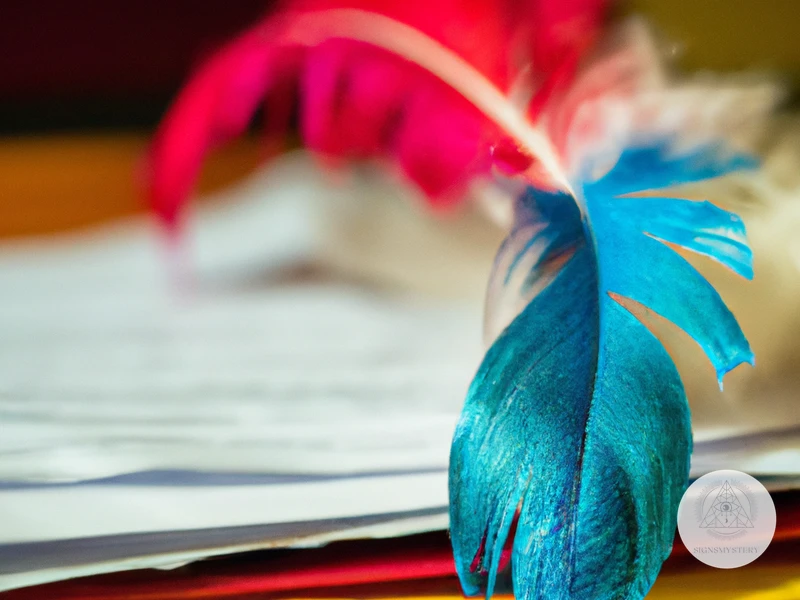
When collecting feathers for shamanic or spiritual use, it is important to understand the legal and ethical guidelines surrounding their collection. The following are some legal considerations to keep in mind:
The Migratory Bird Treaty Act (MBTA) is a federal law that protects migratory birds and their feathers, nests, and eggs from unauthorized collection or trade. Under this law, it is illegal to possess, purchase, sell, barter, or import any migratory bird feathers, except under specific circumstances. Some Native American tribes are exempt from this law for religious and cultural purposes, but it is important to check with your tribe or local authorities to ensure compliance.
In addition to federal laws, some states and tribes have their own laws regulating feather collection and possession. For example, California prohibits the possession of feathers from certain bird species including eagles, hawks, and owls, while other states have prohibitions on the collection of feathers from roadkill or wounded birds. It is important to research and comply with these laws in your area to avoid legal issues.
To summarize, when collecting feathers for shamanic or spiritual use, it is important to be aware of legal considerations such as the Migratory Bird Treaty Act and state or tribal laws that regulate feather collection and possession. By following these guidelines, you can ensure that your practice is ethical and legal.
If you want to learn more about feathered headdresses and their use in shamanic traditions, you can read our article on feathered headdresses in shamanic traditions.
The Migratory Bird Treaty Act
The Migratory Bird Treaty Act is a federal law in the United States that protects migratory birds and their feathers from being taken, traded, possessed, or sold without permission, exception, or permit. This law was passed in 1918 as a preventive measure to decrease the rampant hunting and trading of birds for their feathers. Any violation against this law can lead to a penalty, imprisonment, or both. It is important for shamanic practitioners to understand this law as it governs their use of feathers for spiritual purposes. To avoid any legal actions and uphold ethical and spiritual values, it is best to obtain feathers through legal means such as domesticated birds or through donations from licensed sources. Using alternative tools such as feather replicas can also be an option for shamanic practices.
State and Tribal Laws
It is important to note that in addition to federal laws, there are also state and tribal laws that regulate the collection and use of feathers. Some states have additional restrictions beyond federal law, while some states allow for the collection of certain feathers with a permit.
Here are a few examples of state and tribal laws related to feather collection:
- California: It is illegal to possess feathers from birds listed under the federal Migratory Bird Treaty Act. California also has additional restrictions, such as a ban on possessing feathers from any bird of prey.
- Florida: It is illegal to possess feathers or other parts of most native birds.
- Hawaii: Only Native Hawaiians are allowed to possess feathers from certain native birds, such as the Hawaiian goose or the Hawaiian hawk.
- Navajo Nation: The Navajo Nation has their own wildlife code that includes regulations on the collection and use of feathers. For example, possession of feathers from a golden eagle is only allowed for enrolled members of the Navajo tribe who have a permit.
It is important to research and understand the specific laws in your area before attempting to collect or use feathers. Violating state or tribal laws can result in fines or legal consequences. Additionally, it is important to always ensure that your feather collection is in alignment with the ethical principles of shamanism and to use them respectfully in your practices. For more information on the spiritual significance of feathers in shamanism, check out /spiritual-feather-symbolism-shamanism/.
Methods of Ethical Feather Collection and Cleaning
One of the most important rules of ethical feather collection is to never harm or kill birds for their feathers. Instead, collect feathers that have already fallen off the bird naturally or that were molted. You can find feathers on the ground in outdoor areas where birds are known to roost and nest. Forest floors, beaches, and fields can be great places to look for feathers.
Remember to respect the environment and the animals that live there while collecting feathers. Don’t disturb nests or other forms of wildlife.
If you’re struggling to find feathers in the wild, consider visiting a farm or animal sanctuary that has domesticated birds. You may be able to collect feathers that have been molted by these birds (source).
Cleaning feathers is an essential part of preparing them for use in shamanic practices. However, it’s important to be careful not to damage the feathers during the cleaning process.
To clean feathers, you can use a damp cloth or soft brush to gently remove dirt and debris. Be sure to avoid using water on the feathers, unless it’s absolutely necessary. If water is needed, use a small amount and blot dry with a towel immediately. Too much water can damage the feather’s barbs and affect its integrity.
Another popular cleaning method is to use a mixture of baking soda and cornstarch. Simply sprinkle the mixture onto the feathers and leave for a few hours before brushing off (source).
Remember to handle feathers gently throughout the cleaning process to avoid causing any damage.
Next, let’s take a look at some recommended tools and supplies that can help you with ethical feather collection and cleaning.
Feather Collection
should always be done in an ethical and respectful manner. It is important to only collect feathers that have been naturally shed and not plucked from a live bird, as plucking causes unnecessary harm to the animal. When collecting feathers, it is also important to be aware of any legal regulations or cultural sensitivities surrounding certain species or areas. Some shamanic practitioners prefer to wait for the feathers to present themselves to them in a sacred way, rather than actively seeking them out. Whether using feathers as shamanic tools, offerings, or for other spiritual practices, it is essential to approach the collection process with intention, gratitude, and reverence for the natural world.
Feather Cleaning
Cleaning collected feathers is essential to keep them free of dirt, debris, and pests. It is important to clean feathers gently to avoid damaging the structure of the feathers. Begin cleaning the feathers by brushing them with a soft-bristled brush or wiping them with a soft cloth. This initial cleaning removes any loose debris or dirt.
Next, to disinfect the feathers, you can dip them in a solution of equal parts of hot water and white vinegar. Soak the feathers in the solution for about an hour, making sure not to leave them in too long because vinegar can damage some feather types.
After soaking, rinse the feathers under cold running water. Then, place them on a towel and gently blot them to remove excess water. Leave them to air dry completely.
It is important to note that some feathers, such as raptor feathers, require special care because they are more delicate and can be damaged with incorrect cleaning methods. These feathers should only be cleaned by a trained professional.
Properly cleaned feathers can last a long time and be used in various shamanic rituals or as feathered tools like smudge fans or wands. Clean feathers also provide a clear and pure conduit for communication with animal spirits and can help facilitate deeper connections during divination and readings.
Recommended Tools and Supplies
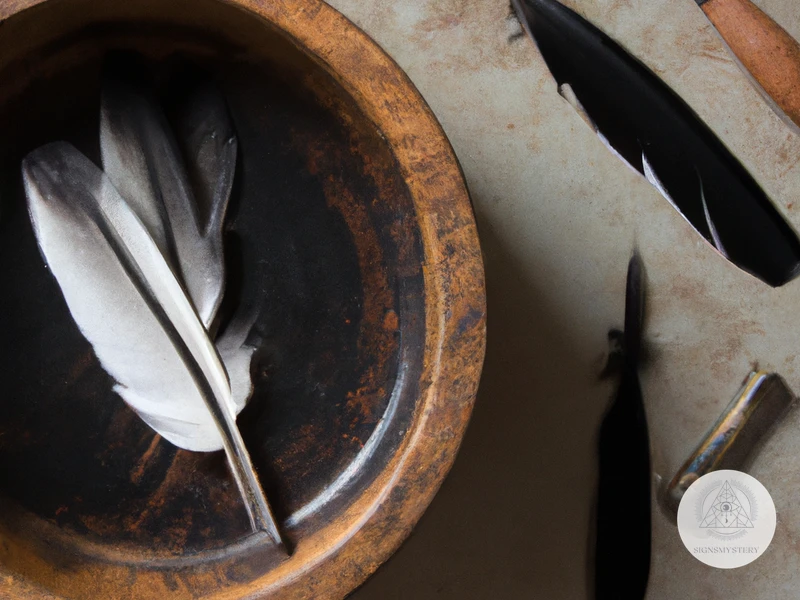
Binoculars: A good pair of binoculars can help you identify bird species and locate feathers from a safe distance.
Gloves: Gloves are essential for protecting your hands from scratches, bites and stings. Choose gloves that are sturdy, comfortable and able to provide a good grip on feathers.
Tweezers: Tweezers are ideal for picking up small feathers, but make sure they have blunt tips to avoid damaging the feather.
Small scissors: Scissors can be used for cutting away excess tissue or trimming feathers to the desired size.
Paper bags: Paper bags are preferable for storing feathers because they allow the feather to breathe and prevent moisture buildup. Avoid using plastic bags which can cause feathers to mold or decay.
Soap: Use a mild, unscented soap such as castile soap or baby shampoo. Avoid using harsh chemicals which can damage feathers and remove their natural oils.
Water: Use clean, warm water to rinse and soak feathers.
Towels: Use soft, absorbent towels to dry feathers. Avoid using high heat or direct sunlight to dry feathers as it can damage or discolor them.
Sand: Sand can be used to clean oily or greasy feathers, simply pour sand into a container and gently roll the feather until clean.
Cornmeal: Cornmeal can be used to clean and reduce oiliness of feathers. Place the feather in a bag with cornmeal and shake vigorously, then remove feather and brush off any remaining cornmeal.
It is important to note that feather collection and cleaning should only be done with respect and appreciation for the bird. To make sure you are using the right tools and supplies for your feather collection and cleaning process, check out our Healing Feathered Shamanic Tools guide.
Feather Collection Tools
To collect feathers ethically and effectively, it’s important to have the right tools on hand. One must-have tool is a pair of long-handled tweezers, which allow for a good grip on small feathers without damaging them. A flashlight is also essential for spotting feathers in low-light conditions. It’s also useful to have a pair of scissors or a small pocket knife to cut feathers free from entangled or difficult to reach places. Lastly, a small container or bag to keep collected feathers safe is necessary. Having these key tools in your collection kit can make the process of collecting feathers both efficient and ethical.
Feather Cleaning Supplies
When it comes to cleaning feathers, having the right supplies can make the process much easier and more effective. Here are some recommended feather cleaning supplies:
1. Mild Detergent: A mild detergent, such as dish soap or laundry detergent, can be used to clean feathers. It is important to choose a detergent that is gentle and free of harsh chemicals.
2. Distilled Water: When cleaning feathers, it is best to use distilled water, as tap water can contain minerals and bacteria that can damage the feathers. Distilled water can be purchased at most grocery stores.
3. White Vinegar: White vinegar can be used as a natural disinfectant when cleaning feathers. It is also effective at removing odors.
4. Soft Brushes: Soft brushes, such as makeup brushes or artist brushes with soft bristles, can be used to gently clean feathers. Avoid using hard bristle brushes, as they can damage the feathers.
5. Tweezers: Tweezers can be helpful when removing dirt and debris from the feathers. They can also be used to carefully straighten and separate any tangled or matted feathers.
6. Towels: Soft towels can be used to gently blot and dry the feathers after cleaning. Avoid using rough or abrasive towels, as they can damage the feathers.
It is important to note that not all feathers can be cleaned using these supplies. Some feathers, particularly those of protected or endangered species, may require specialized cleaning methods or should not be cleaned at all. Always research the specific type of feather you are cleaning and follow recommended techniques to avoid damaging the feather or violating any laws or regulations.
Step-by-Step Guide to Ethically Collect and Clean Feathers
The first step to collecting and cleaning feathers ethically is to properly identify the feather. You need to be able to identify whether the feather belongs to a protected species before collecting it. This can be done by examining the size, shape, and color of the feather. There are many resources available to help with identifying feathers, such as field guides or online resources.
Before collecting any feathers, it is important to be aware of the legal and ethical guidelines surrounding feather collection in your area. Research the laws and regulations set by the Migratory Bird Treaty Act as well as state and tribal laws. If you are unsure about any regulations, it is always best to err on the side of caution and refrain from collecting or possessing the feather.
When collecting feathers, it is important to do so in a way that does not harm the bird or its habitat. Only collect feathers that are naturally molted or shed. Do not take feathers from nests or living birds. It is also important to avoid disturbing the surrounding habitat and to leave it in the same condition as you found it.
After collecting the feather, it is important to clean it properly to remove any dirt, oil, or microorganisms that may be present. Begin by soaking the feather in a solution of warm water and gentle soap. Avoid using harsh chemicals or bleach as this can damage the feather. Gently swish the feather around in the solution and then rinse thoroughly with clean water.
Once the feather is clean and dry, it is important to store it properly to prevent damage. Place the feather in a small paper bag or box to allow air flow and protect it from moisture and dust. Store the feather in a cool, dry place away from direct sunlight.
By following these five steps, you can ethically collect and clean feathers for shamanic use without harming any birds or their habitats. Remember to always research and comply with applicable laws and regulations, and respect the natural world around you.
Step 1: Identify the Feather
Before collecting and cleaning feathers, it is vital to identify the species of the feather. Not all feathers can be legally collected, and identifying the species will ensure that you follow all applicable laws. Use a field guide for bird identification and pay attention to the shape, size, and color of the feather. It is also important to note the location where the feather was found. Some birds are more common in specific regions, and identifying the location can help narrow down the species. If you are unsure about the species, seek the help of an expert or a local birding group. Remember, it is crucial to legally and ethically collect feathers, so take the time to accurately identify them.
Step 2: Check Legal and Ethical Guidelines
Before collecting and cleaning feathers for shamanic use, it’s crucial to check the legal and ethical guidelines in your area to avoid any legal consequences and ensure that you are collecting feathers in a responsible manner. There are federal and state laws in place that protect migratory birds and their feathers, which cannot be collected or sold without proper permits.
One of the most important federal laws to consider is the Migratory Bird Treaty Act of 1918, which makes it illegal to collect, possess, or sell migratory bird feathers,
Subscribe to Our Newsletter
Sign up to receive the latest news and updates.
It is also essential to consider the ethical implications of collecting feathers. It’s important to only collect feathers that have been molted naturally and not taken from living birds. Taking feathers from living birds can cause them pain and distress and disrupt their natural life cycle. It’s also important to collect feathers in a respectful manner and to be mindful of the environment in which the birds live.
Taking the time to research and understand the legal and ethical guidelines surrounding feather collection is an important step in the process of ethically collecting and cleaning feathers for shamanic use. By doing so, you can ensure that you are collecting feathers in a responsible and respectful manner while avoiding any legal issues.
Step 3: Collect the Feather
When collecting feathers, it’s essential to ensure that the bird isn’t harmed in any way. Birds molt feathers throughout their lifespan, so it’s vital to collect feathers that have already fallen from the bird naturally. Additionally, there may be legal and ethical guidelines specific to your area or the species of bird, so it’s essential to follow them.
It’s best to collect feathers that are in good condition and free of damage or disease. You can find feathers on the ground beneath trees, bushes, or areas where birds commonly roost. If you’re not sure where to look, try visiting local birdwatching spots or nature preserves.
When collecting feathers, be gentle and don’t disturb the surrounding area. Avoid taking more feathers than you need, as leaving some behind ensures that other people or animals can enjoy them too. Never disturb active bird nests or remove feathers from living birds, as this is illegal and unethical.
It’s common practice to offer a small gift to the earth in gratitude for taking something from nature, such as leaving a pinch of tobacco or scattering some seeds. This gesture shows respect for the interconnectedness of all living things and can be a significant part of the feather collection process for many individuals.
Collecting feathers can be a beautiful and respectful practice when done correctly and ethically, honoring both the bird and the natural world around us.
Step 4: Clean the Feather
Step 4: Clean the Feather
Cleaning feathers is a delicate process that requires attention to detail. It is important to clean the feathers in a way that does not damage them or alter their appearance. Below are the steps to clean the feather:
1. Inspect the feather:
Before cleaning the feather, inspect it thoroughly to determine the level of cleaning required. Use a magnifying glass to check if there is any dirt or debris stuck in the feather. If there is, remove it gently.
2. Spot clean:
Dampen a soft-bristled toothbrush and use it to gently brush any dirt or debris off the feather. Be gentle to avoid damaging the feather.
3. Sanitize:
Feathers can carry bacteria, viruses and parasites, which can be harmful to humans. To sanitize the feather, lightly mist it with a natural disinfectant or rubbing alcohol.
4. Dry:
After sanitizing the feather, allow it to dry completely before handling it. Lay the feather on a clean, dry towel and place it in a dry and safe place away from sunlight.
5. Store:
Once the feather is completely dry, store it in a dry, cool and airtight container away from direct sunlight, moisture, and pests.
It is important to note that some feathers, such as raptor feathers, require a special permit to be collected and cleaned. It is not legal to collect or clean these feathers without a permit. Always follow the laws and regulations surrounding feather collection and cleaning to avoid any legal consequences.
Step 5: Store the Feather
After carefully cleaning your feathers, the last and final step is to store them properly. Proper storage is crucial in maintaining the integrity of the feathers. Storing feathers in an inappropriate manner can lead to damage and degradation over time. Here are some essential tips on how to store feathers correctly.
Tip 1: Keep your feathers in a cool, dark, and dry storage area. Sunlight, heat, and humidity can all cause damage to the feathers, so it’s essential to store your feathers in a location where they won’t be exposed to these elements. A cool, dark place like a closet or cabinet can help prevent your feathers from fading and becoming brittle.
Tip 2: Store the feather in a rigid container that is big enough to accommodate it. The container should not be too cramped or too airy. Make sure that the container is clean and dry before using it.
Tip 3: Place a small bag of silica gel or a few packets of baking soda in the container with your feathers. This will help absorb any moisture and prevent the growth of mold or mildew.
Tip 4: Ensure that the storage container has a secure lid or seal. This will prevent dust and other particles from settling on the feathers and also prevent other insects or animals from accessing the storage.
Tip 5: Avoid storing feathers in plastic bags or containers. Plastic can trap moisture and lead to mold or mildew growth. If you must use a plastic container, ensure that it has air holes to allow for ventilation.
By following these simple tips, you can effectively store your feathers for future use and prevent any damage to them. Remember, feathers are fragile and require special care to maintain their beauty and power.
Alternatives to Collecting Wild Feathers
While the collection of wild feathers for shamanic use is a common practice, it is not the only option available. There are alternatives that can provide the same spiritual benefits without the ethical concerns surrounding the collection of wild feathers. Here are two alternatives that are worth considering:
One alternative to collecting wild feathers is to use the feathers of domesticated birds. These feathers are readily available and can be collected humanely by gathering them from the birds as they molt. Many domesticated bird breeds, such as chickens and peacocks, have beautiful and unique feathers that can be used in shamanic practices.
Using domesticated bird feathers has the added benefits of being legal and ethically sound. By using feathers obtained from a domesticated bird, you can be sure that no laws have been broken and that the bird has not been harmed in any way.
Another alternative to collecting wild feathers is to use fake feathers made from synthetic materials. These feathers can provide the same visual and tactile experience as real feathers and can be used in a variety of shamanic practices.
Fake feathers are widely available and can be purchased in a variety of colors and styles. They are also more durable than real feathers and do not degrade over time. This makes them a good choice for shamanic practitioners who want a feather that will last for an extended period of time.
While fake feathers do not have the same spiritual energy as real feathers, they can be charged with intention through meditation and prayer. This can help to create a strong spiritual connection with the feather and enhance its usefulness in shamanic practices.
Using domesticated bird feathers or fake feathers can provide an ethical and legal alternative to collecting wild feathers for shamanic use. These alternatives can provide the same spiritual benefits without the ethical concerns surrounding the collection of wild feathers.
Domesticated Bird Feathers
Domesticated bird feathers are a great alternative to collecting wild feathers. These feathers can come from a variety of birds such as chickens, turkeys, and ducks. When using domesticated bird feathers, it’s important to make sure they are ethically sourced and obtained from birds that were not mistreated or harmed in any way. One benefit of using domesticated bird feathers is that they are readily available and can be purchased from stores or online suppliers. Another benefit is that they have a consistent size and shape, making them ideal for certain shamanic practices that require uniformity. However, for those who value the symbolism and energy of wild feathers, domesticated bird feathers may not hold the same spiritual significance. It’s important to make an informed decision when selecting feathers for shamanic use, whether they be wild, domesticated, or fake.
Fake Feathers
For those who do not wish to collect wild feathers or are unable to do so due to legal restrictions, fake feathers are a viable option. These faux feathers are made from synthetic materials and come in a variety of colors and styles. Some fake feathers are even designed to look and feel like real bird feathers.
One advantage of fake feathers is that they are readily available at craft stores or online retailers. This makes it easy for those who are interested in shamanic practices to incorporate feathers into their rituals without having to worry about the legal and ethical implications of collecting wild birds’ feathers. Additionally, fake feathers are a great option for those who are vegan or have ethical concerns about using animal products.
When selecting fake feathers, it is best to look for high-quality options that closely resemble the feathers of the bird species that they are intended to mimic. While cheaper varieties may be tempting, they may not look as realistic and may not hold up as well over time.
Fake feathers can be used in a variety of ways in shamanic practices. They can be used for smudging, fanning, or as decorations on ritual objects. Some individuals also use fake feathers as a way to honor and connect with birds while respecting their natural habitat.
While fake feathers may not have the same spiritual significance as real feathers collected ethically, they can still be a valuable addition to shamanic practices. As with any tool used in spiritual practices, it is important to approach them with intention and respect.
Conclusion
In conclusion, it is essential to understand the importance of ethically collecting and cleaning feathers for shamanic use. It not only honors the birds from which the feathers come from but also respects the laws and regulations set in place to protect them. By following the proper methods and guidelines, individuals can ensure a sustainable and ethical approach to feather collection.
Remember to always check the legal and ethical guidelines for feather collection in your specific area, as laws may vary. It’s also crucial to properly identify the feather and only collect those that have been naturally molted or found on the ground, never harming any birds in the process.
When it comes to cleaning feathers, it’s important to use gentle cleaning methods and avoid harsh chemicals that may damage the delicate feathers. Using recommended tools and supplies, such as soft-bristled brushes and mild soap or vinegar solutions, can help preserve the feathers’ natural beauty and integrity.
For those who prefer not to collect wild feathers, there are alternatives available, such as domesticated bird feathers or fake feathers. These options can still provide the aesthetic and spiritual qualities desired without compromising ethical considerations.
Remember, respect and gratitude for the birds and their feathers are essential in shamanic practices. By following ethical and sustainable methods of feather collection and cleaning, individuals can honor these sacred objects and their connection to the natural world.
Frequently Asked Questions
What is shamanism?
Shamanism is a spiritual practice that involves connecting with the natural world and the spiritual realm to facilitate healing, wisdom, and personal growth.
Why is ethical feather collection important?
Ethical feather collection is important because it respects the birds and their habitats, avoids harm to the environment, and prevents illegal actions that may harm both the collector and the wildlife.
What is the Migratory Bird Treaty Act?
The Migratory Bird Treaty Act is a law that protects migratory birds, their nests, and their eggs from being taken, sold, purchased, or traded. It is enforced by the U.S. Fish and Wildlife Service.
What are some state and tribal laws that protect birds and feathers?
States and tribes may have specific laws that protect birds and their feathers from being taken or sold, such as the Bald and Golden Eagle Protection Act, the Eagle Feather Law, and the Native American Religious Freedom Act.
What are some acceptable methods of feather collection?
Acceptable methods of feather collection may include finding naturally molted feathers, collecting feathers from domesticated birds, and obtaining feathers from birds that were ethically hunted or salvaged through wildlife rehabilitation centers.
What supplies are needed to clean feathers?
Supplies needed to clean feathers may include mild soap, water, toothbrushes, tweezers, and gloves. You may also want to use a disinfectant and a feather-specific conditioner to preserve the feather’s natural oils.
How do I identify the species of the feather?
You can identify the species of the feather by examining its size, shape, color, and pattern. It may be helpful to use a field guide or consult with a knowledgeable expert.
What are some alternatives to collecting wild feathers?
Alternatives to collecting wild feathers may include obtaining feathers from domesticated birds, using fake feathers, or acquiring feathers from ethical and sustainable sources.
What is the best way to store feathers?
The best way to store feathers is to keep them in a cool and dry place, away from direct sunlight and humidity. You may want to wrap them in acid-free tissue paper or store them in airtight containers.
Can feathers be used for other purposes besides shamanic practices?
Yes, feathers can be used for a variety of purposes, such as making jewelry, art, and fashion accessories. They are also used for fly fishing, bird watching, and scientific research.



